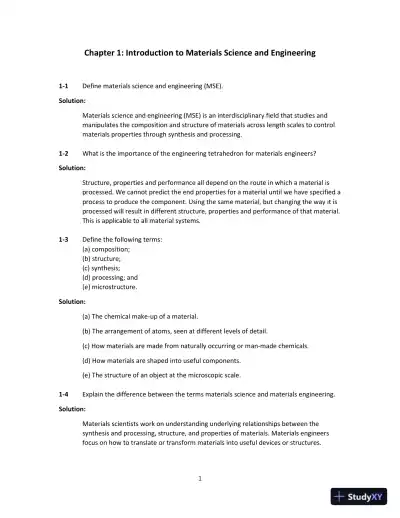Page 1

Loading page ...
Get detailed solutions to your textbook questions with Solution Manual for Science and Engineering of Materials, SI Edition, 7th Edition, a guide designed to make studying easier.

Loading page ...
This document has 571 pages. Sign in to access the full document!